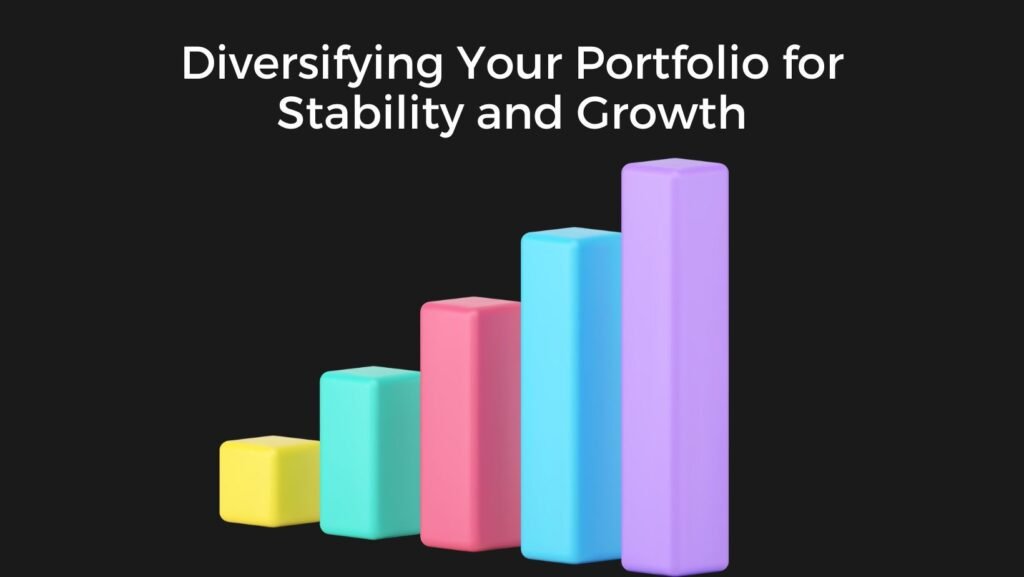Investing is a crucial aspect of building wealth and leaving a lasting legacy. It allows us to grow our assets over time and provides financial security for future generations. However, investing with purpose goes beyond simply accumulating wealth. It involves making conscious decisions about where to invest and aligning our investments with our values and goals. By doing so, we can create a legacy that not only benefits our loved ones but also makes a positive impact on the world.
When we invest with purpose, we have the opportunity to support companies and industries that align with our values. For example, if we are passionate about clean energy, we can choose to invest in renewable energy companies. By doing so, we not only have the potential to generate financial returns but also contribute to a more sustainable future. Investing with purpose allows us to make a difference while building wealth.
Different Investment Options

Before we can start investing for a lasting legacy, it is essential to understand the different investment options available to us. The most common investment vehicles include stocks, bonds, real estate, and mutual funds. Each option has its own benefits and risks, and it is crucial to diversify our portfolio to minimize risk and maximize returns.
Stocks have a high potential return and are a representation of ownership in a firm. But there’s also more risk associated with them. Bonds, on the other hand, are debt instruments issued by governments or corporations. They provide a fixed income stream but generally offer lower returns compared to stocks. Real estate can be a lucrative investment, providing both rental income and potential appreciation. Lastly, mutual funds pool money from multiple investors to invest in a diversified portfolio of stocks, bonds, or other assets.
Also Read: How to Invest Wisely | A Beginner’s Guide
Setting Financial Goals for Long-Term Wealth
To invest with purpose, it is important to establish clear financial goals. What are we trying to achieve with our investments? Are we looking to fund our children’s education, retire comfortably, or leave a significant charitable legacy? By defining our goals, we can develop a personalized investment plan that aligns with our aspirations.
It is essential to set SMART (specific, measurable, achievable, relevant, and time-bound) goals. SMART goals provide a framework for monitoring progress and making necessary adjustments along the way. For example, if our goal is to retire comfortably, we can set a target amount to save, determine the number of years until retirement, and calculate how much we need to invest regularly to reach that goal.
Creating a Personalized Investment Plan

Once we have established our financial goals. it is time to create a personalized investment plan. This plan will serve as a roadmap for achieving our objectives. It should outline our asset allocation strategy which is the distribution of our investments across different asset classes such as stocks, bonds, and real estate.
Diversification is key when creating an investment plan. By spreading our investments across various asset classes and sectors, we can reduce risk and increase the potential for long-term growth. For example: if one sector experiences a downturn, the other sectors may help offset the losses. Additionally, diversification should also consider geographic regions and market capitalizations to further enhance portfolio stability.
Diversifying Your Portfolio for Stability and Growth

Diversification is a fundamental principle of investing for a lasting legacy. By diversifying our portfolio, we can mitigate the impact of market volatility and reduce the risk of a single investment negatively affecting our overall wealth. A well-diversified portfolio typically includes a mix of different asset classes, industries, and geographic regions.
Asset allocation is a critical component of diversification. By allocating our investments across different asset classes, such as stocks, bonds, and real estate, we can balance the risk and reward profile of our portfolio. For example, while stocks offer the potential for higher returns, bonds provide stability and income. By combining both asset classes, we can achieve a balanced and diversified portfolio.
Furthermore, diversification should also consider investing in various industries and geographic regions. Different sectors and regions may perform differently at different times, and by diversifying, we can capture growth opportunities and reduce the impact of any single industry or region on our overall portfolio.
Managing Risk in Your Investment Strategy

While investing is essential in building wealth, it is crucial to manage risk effectively. Risk management involves identifying potential risks and implementing strategies to mitigate them. By doing so, we can protect our investments and increase the likelihood of achieving our long-term financial goals.
One way to manage risk is through asset allocation. By diversifying our investments across different asset classes, as discussed earlier, we can reduce the impact of any one investment on our overall portfolio. Additionally, we can also implement stop-loss orders, which automatically sell a security if it reaches a predetermined price, limiting potential losses.
Another important aspect of risk management is conducting thorough research before investing. By understanding the fundamentals of the companies or assets we are investing in, we can make more informed decisions and reduce the risk of investing in underperforming or volatile investments.
How to Choose the Right Investment Advisor

Choosing the right investment advisor is crucial in building wealth with purpose. An investment advisor can provide valuable insights, guidance, and expertise to help us achieve our financial goals. When selecting an advisor, there are several factors to consider.
First, it is important to assess the advisor’s qualifications and credentials. Seek credentials such as Chartered Financial Analyst (CFA) or Certified Financial Planner (CFP). These titles signify that the advisor satisfies high requirements for competence and professionalism.
Second, consider the advisor’s experience and track record. How long have they been in the industry, and what is their investment philosophy? Look for an advisor whose approach aligns with your goals and values.
Lastly, evaluate the advisor’s fee structure. While some advisers bill an hourly rate or a fixed fee, others charge a percentage of assets under management. Consider your investment size and frequency of interaction with the advisor to determine which fee structure is most suitable for you.
Also Read: Exeter Finance | Your Gateway to Empowering Financial Solutions
The Role of Patience and Discipline in Long-Term Investing

Patience and discipline are essential virtues when it comes to long-term investing for a lasting legacy. The investment journey is not always smooth, and there will inevitably be periods of market volatility or economic downturns. However, it is crucial to stay focused on our long-term goals and avoid making impulsive decisions based on short-term market movements.
One way to cultivate patience and discipline is to develop an investment plan and stick to it. A well-thought-out plan takes into account our financial goals, risk tolerance, and time horizon. By following our plan, we can avoid making emotional decisions driven by fear or greed.
Additionally, regular portfolio reviews can help us stay on track and make necessary adjustments. Markets and economic conditions change over time, and our investment strategy should adapt accordingly. However, it is important to distinguish between necessary adjustments and knee-jerk reactions. Regular portfolio reviews can help us identify areas for improvement while staying true to our long-term investment goals.
Maximizing Tax Efficiency in Your Investment Strategy

When investing for a lasting legacy, it is important to consider the tax implications of our investment decisions. Maximizing tax efficiency can help us minimize our tax liability and maximize our after-tax returns. There are several strategies we can employ to achieve tax efficiency.
First, take advantage of tax-advantaged accounts such as individual retirement accounts (IRAs) or 401(k) plans. These accounts offer tax advantages, such as tax-deferred growth or tax-free withdrawals, depending on the type of account. By contributing to these accounts, we can reduce our current taxable income and potentially grow our investments tax-free for the long term.
Second, consider tax-efficient investment vehicles such as index funds or exchange-traded funds (ETFs). These investment options generally have lower turnover and generate fewer taxable events compared to actively managed funds. Additionally, they often have lower expense ratios, which can further enhance our after-tax returns.
Lastly, be mindful of the timing of investment decisions. For example, if we have investments with significant capital gains, To be eligible for the usually lower long-term capital gains tax rates than short-term rates, we might want to think about holding them for at least a year.
Building a Legacy Through Philanthropy and Charitable Giving

Building a lasting legacy goes beyond financial wealth. It involves making a positive impact on the world and giving back to the community. Philanthropy and charitable giving provide an opportunity to leave a meaningful legacy and make a difference in the lives of others.
When considering philanthropy and charitable giving, it is important to identify causes or organizations that align with our values and passions. Research different charities and evaluate their mission, impact, and financial transparency. By choosing reputable organizations, we can ensure that our contributions are used effectively.
There are various ways to engage in philanthropy and charitable giving. We can make one-time donations, establish a donor-advised fund, or even create a private foundation. Each option has its own advantages and considerations, and it is important to consult with professionals, such as tax advisors or estate planners, to determine the best approach for our individual circumstances.
Conclusion: Empowering Yourself to Build Wealth with Purpose
Investing for a lasting legacy is about more than just accumulating wealth. It is about aligning our investments with our values and goals, making a positive impact on the world, and leaving a meaningful legacy for future generations. By understanding the different investment options, setting clear financial goals, creating a personalized investment plan, diversifying our portfolio, managing risk, choosing the right investment advisor, practicing patience and discipline, maximizing tax efficiency, and engaging in philanthropy and charitable giving, we can empower ourselves to build wealth with purpose.
Remember, building a lasting legacy takes time and requires a long-term perspective. Stay focused on your goals, adapt your investment strategy as needed, and seek guidance from professionals when necessary. By investing with purpose and aligning your wealth with your values, you have the opportunity to create a lasting legacy that extends far beyond financial wealth.
